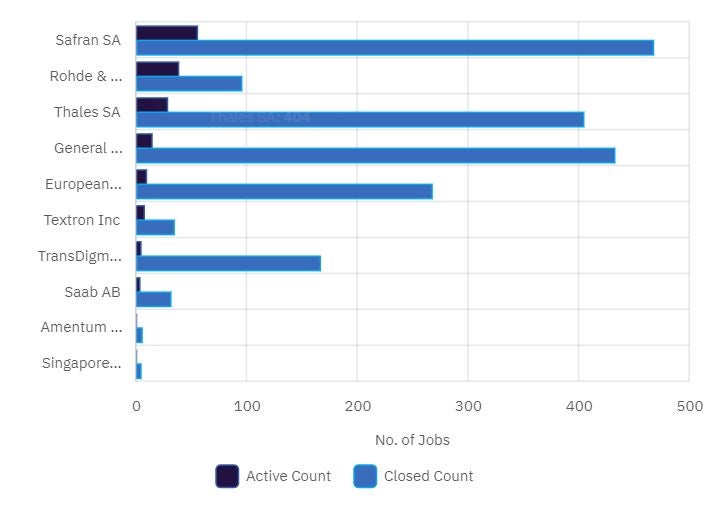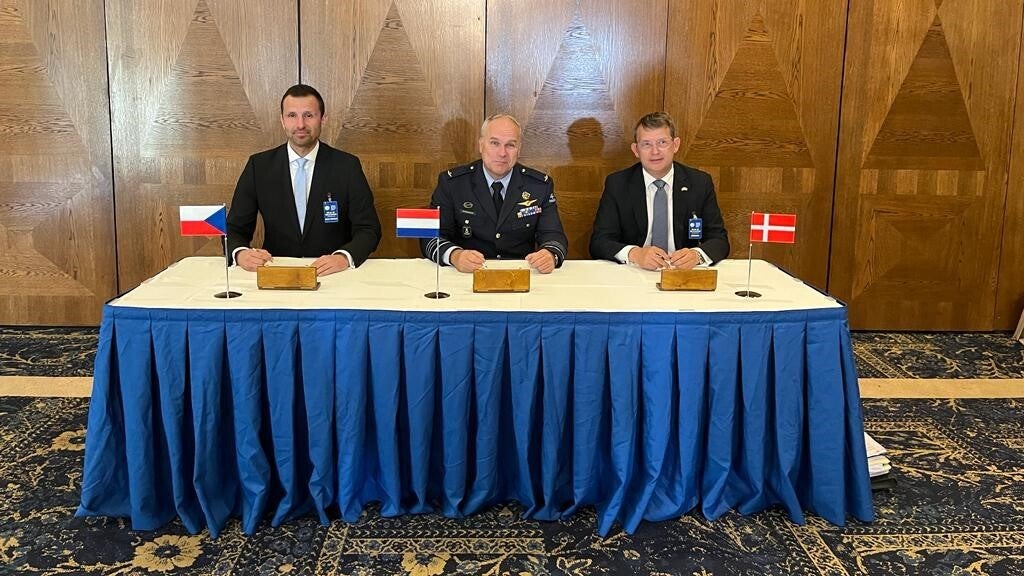In a move aimed at enhancing Ukraine's defence capabilities, the Czech Republic, Denmark, and the Netherlands have united in an agreement that paves the way for the supply of weaponry, ensuring Ukraine's security and promoting economic growth and job opportunities for the Czech Republic.
In a gathering at the Ramstein airbase, Deputy Minister of Defence Daniel Blažkovec of the Czech Republic joined forces with Denmark and the Netherlands to seal a pact to fortify Ukraine's Armed Forces.
The meeting, led by US Secretary of Defense Lloyd Austin, ventured beyond strategic discussions, delving into the future of Ukraine's military and the support it requires on the battlefield.
The agreement, formally known as a "Letter of Intent," benefits both Ukraine and the Czech Republic, as it entails providing various modern and refurbished military equipment to enhance Ukraine's defence capabilities.
The financial backing of Denmark and the Netherlands will see Czech industry supplying additional tanks, howitzers, small arms, infantry fighting vehicles, air defence systems, and electronic warfare equipment to Ukraine.
Ukrainian President Volodymyr Zelenskyy visited Denmark and the Netherlands on 20 August before holding a press conference at a Danish Air Base where he confirmed the upcoming transfer of the 19 Danish F-16s to Ukraine.
Deputy Minister Blažkovec emphasised the significance of this partnership, stating, "Kyiv will receive top-notch Czech weaponry, as well as refurbished equipment, all maintained in battle-ready condition, ready for delivery in the coming months and through 2024."
The primary objective is to establish a long-term collaboration that will fortify the Armed Forces of Ukraine. The first project under this agreement will see Ukraine receive 15 modernised T-72EA main battle tanks shortly.
Beyond the strategic implications for Ukraine, this pact carries economic benefits for the Czech Republic. Deputy Minister Blažkovec underscored this, stating, "This agreement will greatly benefit the development of the Czech defence industry and enhance the security of our nation. It will make Czech defence and security industries even more competitive on the global stage, and it offers significant economic benefits, including job opportunities for our citizens."
Czech Republic’s leading recruiters throughout the last three years, from 11 October 2019 to 11 October 2023, in its industry include Safran SA, Rohde & Schwarz GmbH & Co KG and Thales SA. Czech Republic’s leading recruiter, Safran SA, has 55 active jobs and 467 closed jobs in the last three years, according to GlobalData’s Job Analytics database. Companies such as these should benefit from this new development for Ukraine.

According to GlobalData’s Deals database, the Czech Republic has had 21 deals in the aerospace, defence, and security industry in the last 12 years. With this new industry development, Czech Republic hope to improve on increasing the amount of deals in the Czech Republic’s industry, following this development for Ukraine.
Russia's invasion of Ukraine has also done much to turn public opinion; polling now indicates the majority of Czechs see Russia as a major security threat, and the government has been supplying arms to Ukraine as well as accelerating its military modernisation programme, according to GlobalData's "Czech Republic's Defense Market 2022-2027" report.
This is not the Czech Republic's first venture in supplying weaponry to Ukraine, backed by another state. In a prior initiative involving the United States and the Netherlands, the Czech Republic has delivered 45 modernised T-72 tanks out of 90 units. Additionally, projects are underway to supply MR-2 Viktor air defence systems and passive surveillance equipment.
Coordinating these industrial projects to support Ukraine falls under the Ministry of Defence Intergovernmental Defence Cooperation Agency (AMOS).
This agreement bolsters Ukraine's defence and strengthens the Czech Republic's position in the global market.
Our signals coverage is powered by GlobalData’s Thematic Engine, which tags millions of data items across six alternative datasets — patents, jobs, deals, company filings, social media mentions and news — to themes, sectors and companies. These signals enhance our predictive capabilities, helping us to identify the most disruptive threats across each of the sectors we cover and the companies best placed to succeed.









